[vc_row][vc_column][vc_column_text]Project title: The MOOC Revolution – planning and implementing a form of pedagogical innovation for a broader audience: The case of the ‘Store Design and Visual Merchandising’ online course
Principal investigator: Prof.(FH) Mag.(FH) Roksela Miha
Collaborators: IML 2013 Students
Duration: June 2014 – May 2015
Objectives of the project
Today’s wired world and the exposure to digital technology have fundamentally changed the learning behavior. Information is made accessible at our fingertips and innovative virtual pedagogical forms are creating a real revolution not only in higher education. Among those forms is the MOOC (Massive Online Open Courses), a phenomenon which has been receiving quite an attention since 2012. MOOC is considered as a creative and dynamic form of distributed intelligence, which attracts diverse participants with extensive range of goals and prior knowledge.
This innovative pedagogical method will be introduced in the form of a project which aims at creating a platform in which video contents will be mainly related to marketing topics in English language, targeting a broader audience rather than students of higher education only.
Various visual formats will be used to present the content of this online course based on the book Store Design and Visual Merchandising: Creating Store Space That Encourages Buying (2011) edited by Claus Ebster and Marion Garaus, while different forms of qualitative feedback as well as creative assignment will be used as a tool to ensure high retention rates.
Research methods
The aim of this research project is to further elaborate on the MOOC phenomenon, while investigating and answering questions such as: How can we produce a creative platform which is able to reach a broad audience? How can we view it as a design object? Which content should be presented through videos? How can we plan it? What makes this MOOC an excellent and distinguished product? What differentiates us from other already existing MOOC platforms? How can the MOOC designer enable and enhance the experiences in a way that best serves the unique needs of each individual learner? Which tools to use in promoting the MOOC platform? Which are the challenges of a MOOC model? Who are our competitors and whom are we targeting?
The research concentrated on an in-depth literature review followed by a thorough investigation and comparison analysis of several already existing MOOCs, and carefully looked into the provided elements and the feasible future promotional strategy of this educational model.
Outcome
The outcome of the project is a finalized proposal of designed and developed video content. It based on the principal concepts and hands-on suggestions as described in the book Store Design and Visual Merchandising: Creating Store Space That Encourages Buying (2011) edited by Claus Ebster and Marion Garaus. This will facilitate the creation of a future educational platform (an online course) by means of which diverse students of higher education and other audience will be introduced to complex theories while exploring the fun and fascinating world of marketing.
The interactive and creative video format proposed by the IML2013 students. It covers the topics of all seven units of the book, such as goals and relevance of store design, creation of emotional experiences and theming, use of ambient factors such as music as well as colours and scents (Ebster & Garaus, 2011).
This will offer a great opportunity in diversifying content delivery while making teaching fun and creating a unique learning environment not found in a traditional classroom.
In the first phase of this project, the IML2013 students researched how to create a MOOC with a competitive advantage in the market. Their recommendations also included effective promotional tools to further reach a global targeted audience. The outcome of this research will serve as a starting point for future MOOC’s design at LBS.
[/vc_column_text][/vc_column][/vc_row]


Recent Comments